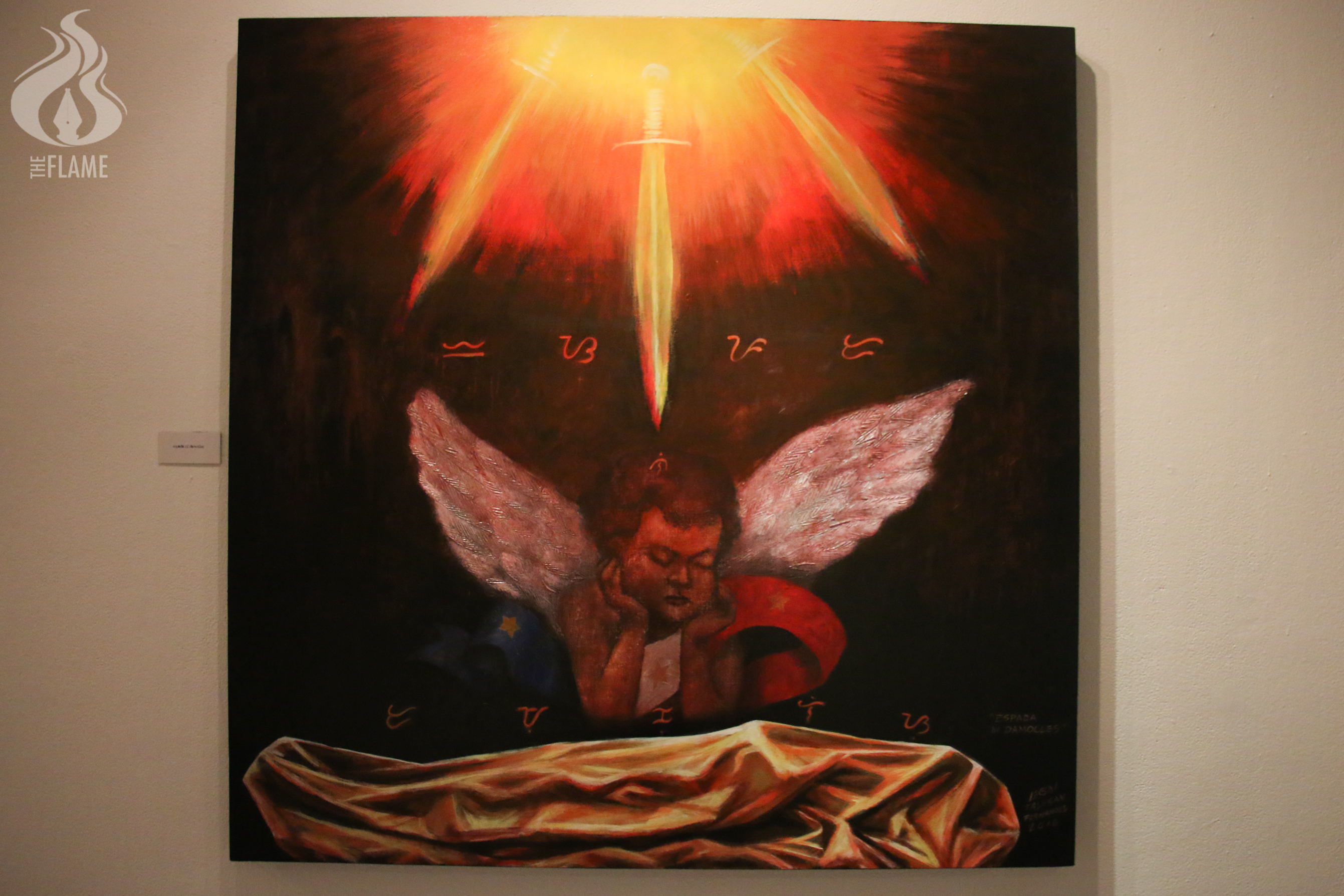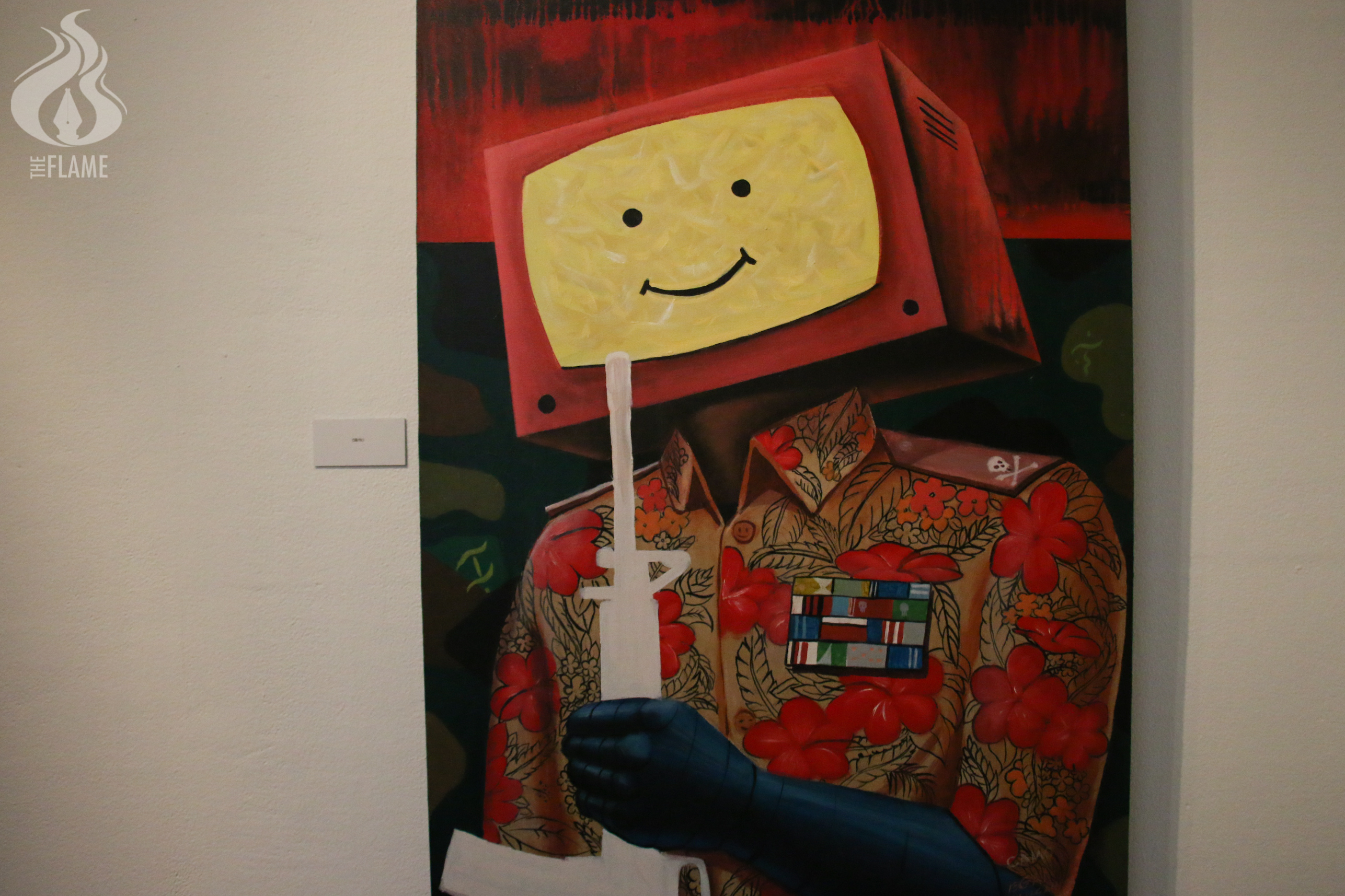ON SEPT. 21, 1972, then president Ferdinand Marcos signed Proclamation No. 1081 and rendered the state under armed control. This declaration resulted to around 107,240 human rights violations, which left a horrendous mark on the nation.
Stories of the horrors of the period are retold every year. But millennials—who were too young to have experienced or remember the bloody era—continue to show apathy, while the preceding generation appears to have forgotten.
The Sound of Silence: Remembering Martial Law is an eye-opening exhibit featuring the works of Edgar “Egai” Talusan Fernandez. Here are some of the pieces which invoke the various dimensions of the oppressive period:

- Pandora ng Karunungan, a black and white painting, presents a head whose temple has a flicked off switch, and a mushroom cloud of an explosion above it. The person’s nose is hollow, and inside, an enigmatic figure wearing a gas mask peers out. The blank eyes, on the other hand, stare out from the canvas and give off an eerie mood.
- Espada ni Damocles features an angel contemplating over a body wrapped in gold cloth. The angel’s wings are smudged, and the colors and stars of the Philippine flag are on a ribbon weaved around his arms. A trio of golden swords illuminates the artwork, and appears to signify the sun from the national flag. The Baybayin characters around the angel translate to “Espada Damocles,” an allusion to peril to those seated in power.
- Tints of red accentuate Camo, a piece which shows a character clothed in what seems to be a cross between a Hawaiian polo shirt and military attire, with a badge pinned on the right. The man holds an obscured rifle in his iron hand. A red monitor, acting as his head, displays an artificial smile against a beige yellow screen. The image brings about the tone of menace and deception a ruler may incite.
Photo by KATHLEEN MAE I. GUERRERO - An ode to the journey of the Philippines and its people, Paglalakbay reminds the audience of how much the country has undergone. Painted on the far left are Lapu-Lapu’s battle with the Spaniards in Mactan, and the Americans who bear their flag and shotguns. On the far right, a tattered star-spangled banner is draped across the sky. Below it, some atrocities during the Martial Law are shown: masked soldiers, dead bodies, and a string of newspapers with devastating headlines. Amid the turmoil, a scarlet fabric cradles indigenous tribes, the Katipunan, Jose Rizal, and other figures riding a balangay. The image illustrates the enduring spirit of the Filipinos in the country’s long, exasperating journey.
Photo by KATHLEEN MAE I. GUERRERO - Hanap Liwanag delivers a haunting and desperate message dedicated to the neglected and abused prisoners during the regime. It presents a hand scraping against a surface covered in mud. The thinning hand, weighed down by a thick silver chain, has its veins popping out due to the subject’s frustration. Piles of human skulls and bones are scattered on the floor. The work retells of what transpired inside the cells of illegally detained prisoners. The mood of hopelessness reverberates in the painting.
Photo by KATHLEEN MAE I. GUERRERO - Huag Tularan! is a timely installation art that urges people to face reality. A face is tightly covered in masking tape, and the rest of its body seems to be buried under the rubbles. The head appears to be attempting to escape the confines of the ground, while a cardboard with the same message (do not emulate), is strung around it. This is a prompt to the current generation that the oppression and injustice in the past may reflect the issues that the country faces today.
Although the Marcos regime has ended long ago, the repetition of a similar episode is plausible if millennials continue to turn a blind eye. Fernandez hopes to echo the past that the young generation seems to have forgotten, and remind those who were present during Martial Law to change the course of the recurring history for the sake of a better nation.
Sound of Silence: Remembering Martial Law is on view at the NCAA Gallery until Sept. 30. F JULIENNE MAUI C. MANGAWANG





